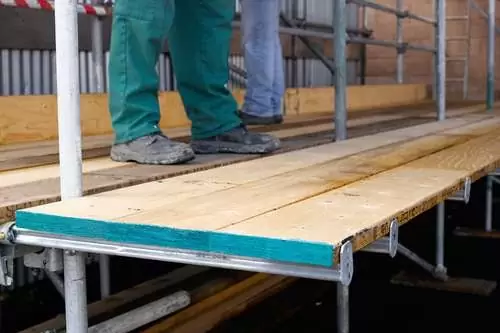Scaffold wooden planks are an essential component in construction and renovation projects, providing a stable platform for workers and materials. The choice of scaffold wooden planks can significantly impact the safety, efficiency, and overall success of your project. In this article, we will look at key factors to consider when selecting the right scaffold wooden planks for your project.
Material And Quality
The first and foremost consideration when choosing scaffold wooden planks is the material and quality. Most scaffold planks are composed of wood. Therefore, it's important to choose sturdy, high-quality wood to protect workers and prolong the life of the planks. Common wood types used for scaffold planks include pine, fir, and cedar.
It's essential to inspect the planks for any defects, such as knots, cracks, or warping, as these can weaken the plank and pose a safety hazard. Look for planks that are certified by industry standards to meet quality and safety requirements.
Size And Length
The size and length of scaffold wooden planks are critical factors in choosing the right ones for your project. The length should be appropriate for the span between scaffold supports, ensuring that the planks are securely supported on both ends without overhanging. Oversized or undersized planks can lead to instability and accidents.
Common lengths for scaffold planks are 8 feet, 10 feet, and 12 feet, but custom lengths may also be available depending on your project's requirements. Additionally, consider the width of the planks, typically ranging from 9 inches to 12 inches. Wider planks provide more space for workers and materials but may be heavier and less manageable.
Load Capacity
Load capacity is a critical safety consideration when selecting scaffold wooden planks. Planks must be able to support the combined weight of workers, tools, and materials without exceeding their maximum load capacity. Each plank should be rated for its load-carrying capacity, and this information should be readily available from the manufacturer or supplier.
Ensure that the planks you choose have a load capacity that exceeds the maximum load they will be subjected to during your project. Overloading scaffold planks can result in structural failure, leading to accidents and injuries.
Durability And Weather Resistance
Scaffold planks are often exposed to various weather conditions, including rain, snow, and extreme temperatures. Choosing planks that are durable and weather-resistant is essential to ensure their longevity and safety. Pressure-treated wood or planks with protective coatings can be more resistant to moisture, rot, and decay.
Maintenance And Inspection
To find and fix any problems that can develop over time, scaffold wooden planks require routine inspections and maintenance. Inspect the planks before each use, looking for signs of damage, wear, or deterioration. Damaged planks should be promptly replaced to prevent accidents.
Proper storage of scaffold planks is also crucial. Store them in a dry, well-ventilated area, off the ground, and away from direct sunlight to prevent warping and decay.
Conclusion
Choosing the right scaffold wooden planks for your project is a crucial decision that can significantly impact safety, efficiency, and project success. Consider factors such as material quality, size, load capacity, OSHA compliance, durability, and maintenance requirements when making your selection.
By investing time and attention into choosing the right scaffold planks, you can create a safe and reliable working platform for your construction team, ensuring that your project proceeds smoothly and without unnecessary risks. Remember that safety should always be a top priority when working with scaffold wooden planks, and thorough research and adherence to industry standards are key to making the right choice.


No comments yet